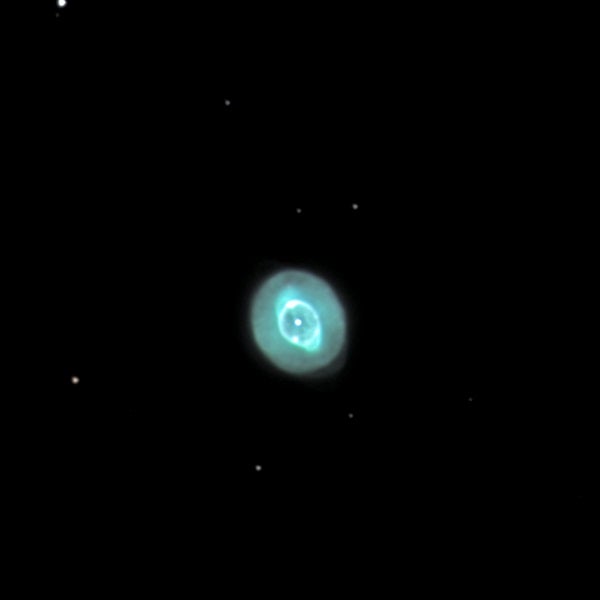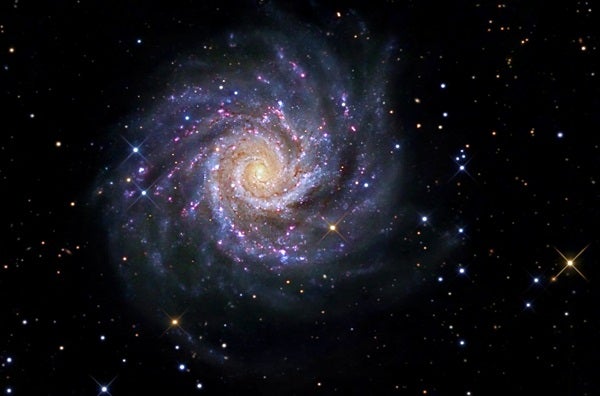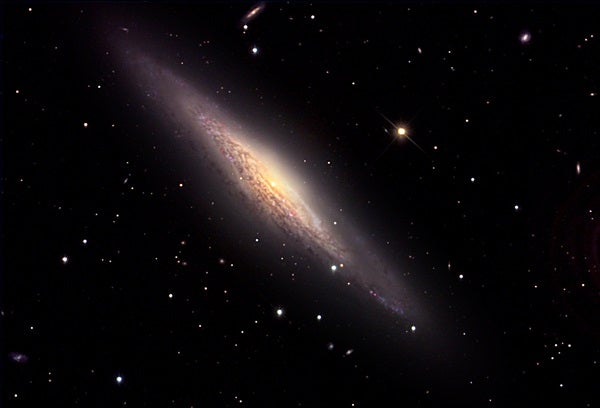This originally appeared in our October 2009 issue.
Each spring, amateur astronomers around the world challenge themselves by competing in the Messier Marathon — a visual feat in which observers use their telescopes to view all 109 celestial objects catalogued by French comet-hunter Charles Messier in a single night. This dusk-to-dawn romp has been a popular annual event since the 1960s. The search is fun and gratifying, and it helps observers hone their hunting skills.
Why not double the fun by hosting a similar challenge in the autumn? I have created a list of 109 deep-sky objects that you can hunt down in a single night on or around the New Moon closest to Halloween. In deference to the time of year, and considering that many deep-sky objects appear as pale specters of fuzzy light, I decided to call this October treat the Ghost Hunt.
Like the Messier Marathon, the Ghost Hunt is intended to be a fun and challenging activity that lasts from dusk to dawn. But there’s one big difference: What you’ll search for in the Ghost Hunt are not just Messier objects but 109 targets carefully selected from several deep-sky object lists.
109 spooky objects
The Ghost Hunt features 25 open star clusters, 27 galaxies, 16 emission nebulae, four reflection nebulae, 19 planetary nebulae, 14 globular star clusters, three supernova remnants (including two segments of the Veil Nebula), and one dark nebula. While nearly 70 percent of the objects in the Ghost Hunt are not Messier objects, they should be no more challenging to see.
Even the most southerly object (#50 on the list — emission nebula NGC 2467 in Puppis) stands 8° higher in the sky than the most southerly Messier object (M7 in Scorpius). When NGC 2467 is highest in the sky, it sits nearly 20° above the horizon from a latitude of 45° north.
If you peruse the list, you’ll find some of the night sky’s already famous ghosts: #10, Mirach’s Ghost (NGC 404); #57, the Ghost of Jupiter (NGC 3242); and #101, the Ghost of Saturn (NGC 7009). The list also includes several other spooky favorites: #11, the Owl Cluster (NGC 457); #14, the Phantom Galaxy (M74); #19, the Outer Limits Galaxy (NGC 891); and #62, the Flying Witch Cluster (Mel 111).
I took great pains to choose objects that are visible through small- to medium-sized telescopes under either a dark sky or (except for the galaxies) under a suburban sky with the aid of light-pollution reduction filters. The brightest object in the Ghost Hunt is #25, the Pleiades star cluster (M45) in Taurus, which shines at magnitude 1.5. The faintest object on the list is the first entry, the Bow-Tie Nebula (NGC 40), which glows at magnitude 12.3. But as skilled observers know, magnitudes alone can be deceiving. NGC 40 is easier to see than some Messier objects because it is small and condensed.
The key to success in any competition is to make a plan and stick to it. It’s important to pace yourself. Start by looking at the objects that are closest to setting as night falls. Then consider which objects you think will be easiest to find, and go after them first.
I suggest categorizing the objects into groups and moving from group to group south to north (or vice versa). You can work your way progressively eastward until dawn.
Everyone will want to tackle the bright nebulae M16 (#76) in Serpens and M17 (#77) in Sagittarius first because they’re low in the southwest after sunset. Then keep searching this section of sky for other objects on the list because none of them will return to the morning sky.
Several targets low in the northwestern sky at dusk — such as the galaxies M82 (#56) and M101 (#71) in Ursa Major — appear much higher in the northeastern sky before dawn. And if you happen to miss globular clusters M13 (#72) or M92 (#73) in Hercules, they will reappear low in the northeastern sky before dawn.
The lowest, most southerly predawn object will be the Ghost of Jupiter (NGC 3242 — #57) in Hydra, but even it is fairly well-positioned above the horizon.
Spirited public events
As with the Messier Marathon, friends or club members can join together in the hunt. It’s also a good event for astronomy clubs, museums, and societies.
Why not host a costume star party for the public with telescopic observing? Take advantage of the fuzzy appearance of some of these deep-sky objects, and help people get interested in our hobby at a time of year when we all yearn for ghost sightings. Be creative in your approach. To inspire kids, you can refer to your telescopes as “ghost catchers” and your filters as special “ghost viewers.” Just have some fun at a time of year when most people expect treats.
If you target a bright planetary nebula like the Ring Nebula (M57 — #83) in Lyra or a supernova remnant such as the Veil Nebula (NGC 6992/5 — #95) in Cygnus (both of which are high in the sky after dusk), you can teach your guests about the different life cycles of stars. The Veil exemplifies the demise of a single supergiant star, while the Ring reflects the ultimate fate of stars like our Sun.
Not just phantom dates
This year, the New Moon falls on October 18, a Sunday. So that weekend would be the best time to hold a Ghost Hunt. The weekend beginning Friday, October 23 is also good because the Moon is still a waxing crescent that sets around 10 p.m. local time. It shouldn’t affect your view of the objects on the list.
As your guests admire the Ghost Hunt’s sights, explain to them how, owing to the vastness of space and the limited speed of light, we can travel back in time by simply looking up at the night sky. When it comes to astronomy, the past is very much alive. And it will remain so far into the future.












